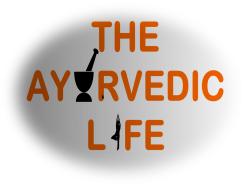Batata vada without deep frying is a guilt-free twist to its traditional deep fried predecessor that is made with spiced potato balls, coated with gram flour batter.
Batata vada is one of those dishes that brings back nostalgia of my years growing up in my beloved Bombay! One bite of these brings back vivid memories of the aromas, sights and sounds of my childhood and teenage years, on those rainy afternoons when a vada-pav with a kadak cutting chai was nothing short of heaven on earth :)!
Ingredients (makes 15 medium sized vadas):
For the potato filling:
- Potatoes (3 medium sized ones)
- Garlic (per taste – I used 1 small pod only)
- Ginger (per taste – I used a small 1/2 inch piece)
- Green Chilli (per taste – I used half a small chilly)
- Jeera (cumin) powder (1/2 tsp)
- Dhaniya (coriander) powder (1/2 tsp)
- Hing (asafetida) powder (a few pinches)
- Salt (to taste)
- Lemon juice (1 tsp) (you may replace this with 1/2 tsp of amchur or dried mango powder also)
For the outer gram flour cover:
- Besan (gram) flour (10 tbsp or as necessary)
- Salt (to taste)
- Red chilly powder (to taste)
- Hing (asafetida) powder (a pinch)
- Haldi (turmeric) powder (1/4th tsp)
- Jeera (cumin) or ajwain (carom) seeds (1/2 tsp)
Method:
For the potato filling:
- Boil the potatoes, let them cool, remove the peel and mash them well.
- Crush ginger, garlic and green chillies to a fine paste and mix with the potatoes.
- Add dry powders, lemon juice and salt to taste.
- Make balls and keep aside.
For the outer gram flour cover:
- Mix the gram flour with enough water to make a batter that is not too runny but not too thick either – dosa batter consistency should be good.
- Add the spice powders and seeds and keep aside.
- In an appam pan on medium heat, add some oil into each of the holes.
- When the oil is well heated, add the gram flour batter, so that it fills the hole half way through.
- Carefully drop the potato balls into the batter.
- Now carefully drizzle some more batter on top of the potato filling. It will ooze outside the hole as well, but that is okay.
- Drizzle some more oil if you want to on this side of the vada. Let it cook for a few minutes on medium heat.
- Now roughly separate the besan that has overflowed outside around the border of the circle. Flip the vadas one by one. You may flip the besan batter in between the holes also as needed, so that they cook on both sides.
- Ensure that the vada is well cooked all over and has reached a nice golden brown color, before taking it out of the pan.
- You may eat the besan batter fritters as is or discard them if you don’t want to eat them. Ensure that you cook these well if you plan to eat them.
- Enjoy your vadas with spicy sesame-red chilly powder or garlic-red chilly powder!
Tastes (Rasas):
Sweet (potato, besan), sour (lemon), salty (salt), bitter (ajwain, cumin, coriander), pungent (chilly, ginger, garlic, cumin), astringent (hing).
Doshic Influence:
Potatoes are heavy, sweet and nourishing – good for vatas and pittas and okay for kaphas in moderation. Taking the deep fried element out of this recipe makes it even more suitable not just for kaphas in particular, but also for pittas. That is not to say, you cannot enjoy a little deep-fried stuff once in a while, but minimizing the frequency and quantity of deep-fried foods is always good for all. Spices like cumin, coriander, hing, carom seeds etc. add to the digestibility of the dish.
Effects on the Mind (Gunas):
In very small quantities, these batata vadas are sattvic if the ingredients are fresh, overall taste is mild and not overly sour or pungent and gram flour is well cooked, without using too much oil. If the overall taste is pungent or if too much oil is used, the rajasic qualities begin to increase. If deep-fried, stale, or consumed in large quantities, the tamasic qualities increase.





What is the name of this pan?
It is an appam pan, also called appe pan or paniyaram pan.